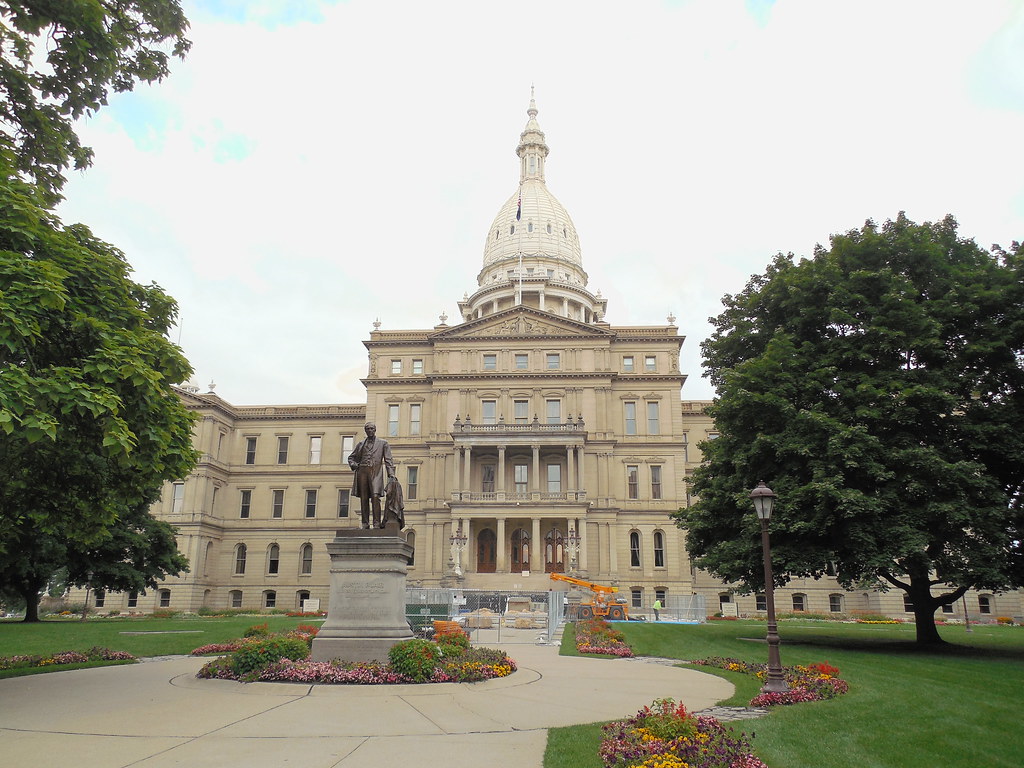New “Blight Elimination Program” Offers Transformative Grant Funding to Rural and Urban Michigan Communities
July 1, 2022

Michigan Association of Land Banks and Center for Community Progress applaud the bill, which provides much-needed funding for vacant property stabilization, remediation, and demolition.
LANSING, MI – On June 30, 2022, the Michigan State House and Senate passed H.B. 5783, which included a critical appropriation of over $75 million to support blight elimination in every community across the state. The one-time appropriation is a part of the overall $76 billion state budget on its way to Gov. Gretchen Whitmer for signature.
Critically, $21.5 million of the blight elimination program funds will be used for a competitive grant program to address vacant, abandoned, and deteriorated properties in the state. Rural counties are eligible for a guaranteed minimum allocation of $200,000, a huge victory for smaller communities struggling with blighted properties and population declines. Cities, townships, counties, and land banks can apply for the grant funding. These grant funds may be used to:
- Stabilize vacant residential, commercial, and industrial buildings to secure them and protect against further deterioration, with the goal of preserving them for future rehab to purposeful use
- Demolish vacant and blighted residential, commercial, and industrial structures that cannot be rehabilitated
- Provide matching or gap funding for environmental remediation on vacant land – often a critical barrier to redevelopment
The total $21.5 million appropriation will be allocated through the State Land Bank Authority. In Michigan, land banks are quasi-governmental entities, created pursuant to Michigan’s Land Bank Fast Track Act (Public Act 258 of 2003), and represent rural and urban communities across the state. They have been a vehicle for supporting community and economic development by maintaining or demolishing vacant structures, assembling property for future reuse, turning problem properties into quality housing for all income levels, facilitating commercial and industrial property redevelopment, and working with communities to transform vacant land into parks, gardens, and other community spaces.
Michigan has 45 county land banks, one city land bank, and the state land bank, which serves the remaining 38 counties. “We are thrilled the legislature is committed to ensuring Michigan communities large and small, urban and rural, have access to the resources they need to eliminate blight,” said Anne Giroux, chair of the Michigan Association of Land Banks (MALB) and executive director of the Marquette County Land Bank, “This funding will help tackle vacant residential, commercial, and industrial properties all across our state.”
There are an estimated 223,774 abandoned homes and 149,498 vacant business addresses statewide. A conservative estimate of the cost to demolish or stabilize the fraction of vacant properties assumed blighted in Michigan is $1.7 billion.
Michigan land banks have the authority to acquire property cost-effectively through a variety of mechanisms, primarily through the tax foreclosure process; extinguish liens and clear title efficiently through expedited bulk quiet title; and flexibly sell property to a responsible buyer and/or developer in support of community goals making them a critical tool to address vacant and deteriorated properties more swiftly and effectively across the state.
“Vacant properties are a statewide issue. When left unaddressed, these properties pose significant costs to public health, safety, community wealth, and more,” said Payton Heins, director of Michigan Initiatives for the Center for Community Progress, the nation’s leading nonprofit dedicated to ending systemic vacancy and abandonment. “With this investment, Michigan is taking an important step to strengthening economic growth, reducing crime, and improving overall public health and quality of life.”
The blight elimination program was originally proposed in the Senate through Senate Bill 834. Leadership included Senate Appropriations Committee Chair Jim Stamas (R-36), Sen. Kenneth Horn (R-32), and Sen. Curtis Hertel (D-23). The House supported the program through House Bill 5783. Leadership on the House side included House Appropriations Committee Chair Thomas Albert (R-86) and Rep. Greg VanWoerkom (R-91).
###
About the Michigan Association of Land Banks: Founded in 2007, the Michigan Association of Land Banks (MALB) works to ensure that the state’s 46 local land banks have the policies, support, and capacity they need to revitalize vacant properties and support the strengthening of Michigan communities. MALB focuses on building the knowledge of local land bank leaders by uplifting best practices and fostering peer-to-peer learning, ensuring state and local policy frameworks enable effective land bank programs, and building the knowledge of partners throughout the state on the role and impact of land banks. For more information, visit milandbank.org.
About Center for Community Progress: Founded in 2010, the Center for Community Progress is the national leader for building strong, equitable communities where vacant, abandoned, and deteriorated properties are transformed into assets for neighbors and neighborhoods. Today, Community Progress has affected change in forty-eight states through leadership education and collaborative systems, policy, and practice reforms. Simply, we work to transform “Vacant Spaces into Vibrant Places.” For more information, visit communityprogress.org.
Recent Press Releases
Get the latest tools, resources, and educational opportunities to help you end systemic vacancy, delivered to your inbox.
